OWC Mercury Extreme Pro 6G SSD Review (120GB)
by Anand Lal Shimpi on May 5, 2011 1:45 AM ESTRandom Read/Write Speed
The four corners of SSD performance are as follows: random read, random write, sequential read and sequential write speed. Random accesses are generally small in size, while sequential accesses tend to be larger and thus we have the four Iometer tests we use in all of our reviews.
Our first test writes 4KB in a completely random pattern over an 8GB space of the drive to simulate the sort of random access that you'd see on an OS drive (even this is more stressful than a normal desktop user would see). I perform three concurrent IOs and run the test for 3 minutes. The results reported are in average MB/s over the entire time. We use both standard pseudo randomly generated data for each write as well as fully random data to show you both the maximum and minimum performance offered by SandForce based drives in these tests. The average performance of SF drives will likely be somewhere in between the two values for each drive you see in the graphs. For an understanding of why this matters, read our original SandForce article.
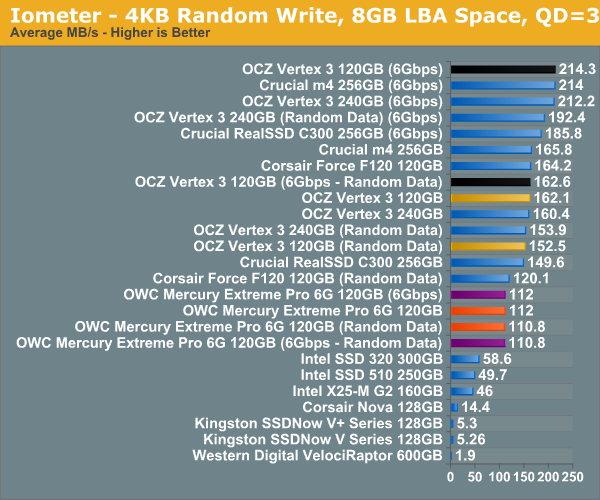
Here you can see the cap on 4KB random writes alive and well. As I've mentioned in previous articles, we're finally good enough when it comes to 4KB random write performance for current desktop workloads - so despite the cap you won't see any real world impact of it in our tests.
Many of you have asked for random write performance at higher queue depths. What I have below is our 4KB random write test performed at a queue depth of 32 instead of 3. While the vast majority of desktop usage models experience queue depths of 0 - 5, higher depths are possible in heavy I/O (and multi-user) workloads:
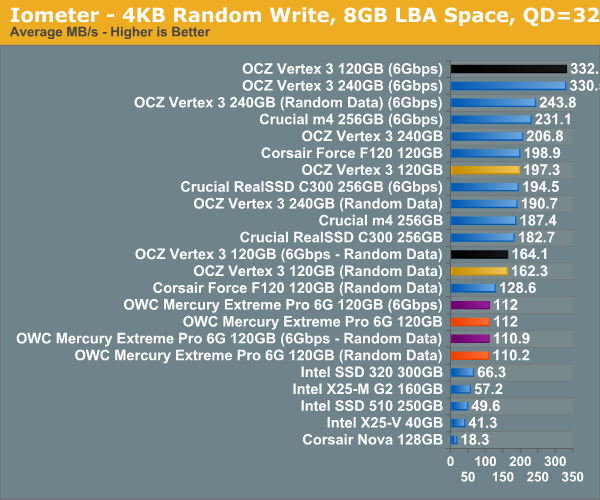
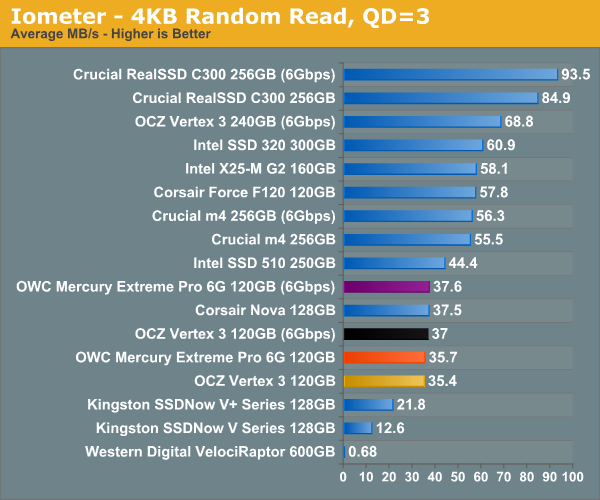
Sequential Read/Write Speed
To measure sequential performance I ran a 1 minute long 128KB sequential test over the entire span of the drive at a queue depth of 1. The results reported are in average MB/s over the entire test length.
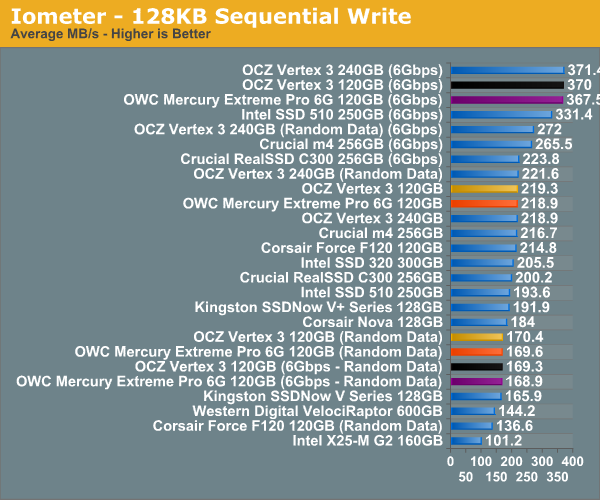
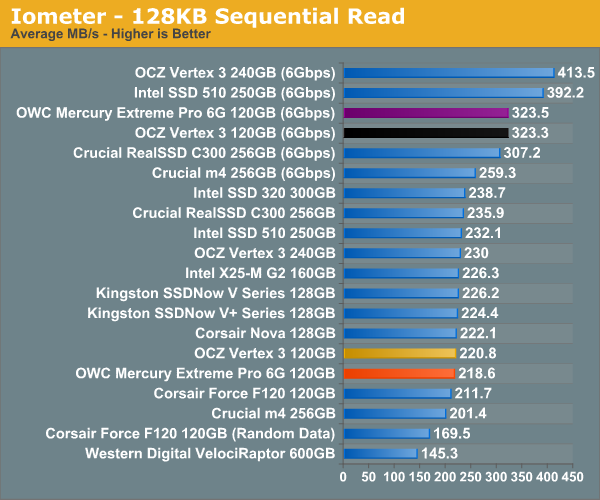










44 Comments
View All Comments
taltamir - Thursday, May 5, 2011 - link
doesn't the Z version let you access the CPU's video decoding/encoding engine while having an external GPU?While with the P and H versions you have to choose one or the other?
jb510 - Friday, May 6, 2011 - link
In considerin an SSD for an OS X boot volume should one be more concerned with compressible data or incompressible data? I wondering because I know OS X compreses some of it's OS files and presumably many apps do the same thing. Further I'm assuming the light workload test uses a windows simulation, can anyone say if/how that would differ from OS X?I'm probably more worried about it than I need to be but trying to decide between OCZ/OWC, Intel and Crucial and still not clear which is best for a dual drive setup in a MacBook pro.
zilab - Saturday, June 4, 2011 - link
"OCZ is still SandForce's favorite partner and thus it gets preferential treatment when it comes to firmware."I just confirmed with OWC, they're shipping the 6G with the 60K IOPS read/write frimware. Hope you update your article soon. This is kinda misleading, I'm reading comments here and people think that only OCZ drives have the 60K IOPS firmware.
nish0323 - Wednesday, June 15, 2011 - link
I had the Crucial C300, OCZ Vertex 3, and the OWC Extreme 6G in my laptop on a Sata6G connection... and honestly I didn't notice a difference in speed between the three of them. Against the Vertex 2 and the Intel X-25, there was a slight difference. In the end, I decided to go with OWC Extreme 6G for one reason... **** FIVE YEAR WARRANTY ****!!! That's friggin' awesome... ONLY SSD to offer a 5 year warranty on an SSD. And costwise, they're around the same or lower as the rest of the competition.